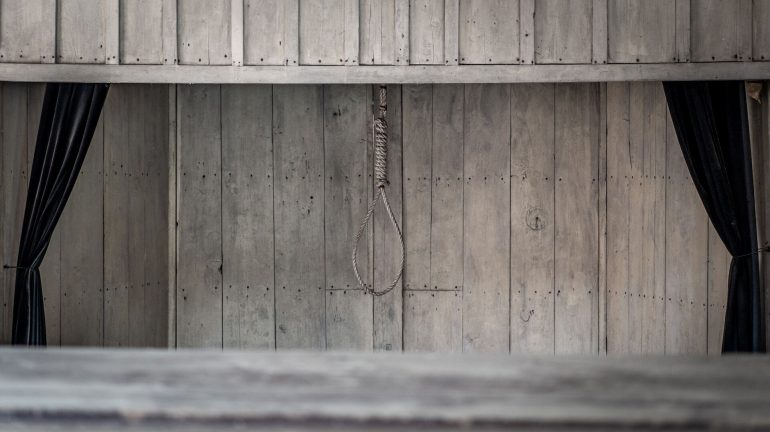A UN fact-finding mission reported that Iran is still imposing severe punishments on individuals suspected of involvement in mass protests, including disturbing executions.
The protests were sparked by the death of 22-year-old Iranian Kurd Jina [Mahsa] Amini in September, who was arrested for alleged violations of strict women’s dress rules based on Islamic sharia law.
In a special session in November, the UN Human Rights Council voted to initiate a high-level investigation into the deadly response. Sara Hossain, chair of the independent international fact-finding mission, reported to the council that the Amini family’s “right to truth and justice remains unfulfilled” 10 months later.
Hossain said the lack of transparency surrounding the investigation into Amini’s death is further highlighted by the ongoing detention of journalists Nilufar Hamedi and Elahe Mohammadi, who initially reported the event.
Iran has pardoned 22,000 individuals in relation to the protests, suggesting many more were detained or charged, said Hossain. There is no official data on the nature of the allegations against them, or on those convicted, detained or charged in connection to the protests.
Hossain reported that pardoned protesters were seemingly coerced into expressing remorse and to effectively admit guilt by signing commitments not to commit “similar crimes” in the future. “Severe punishments continue to be imposed on those involved in the protests, including for exercising rights protected under international human rights law,” she said.
“Most troublingly, seven men have been executed following rushed proceedings marred by serious allegations of fair trial violations, including confessions extracted under torture.”
The fact-finding mission called on Tehran to halt the executions of individuals sentenced to death in relation to the protests and urged Iran to release all those detained for peaceful assembly and protest reporting.
In response, Kazem Gharib Abadi, secretary-general of Iran’s High Council for Human Rights, said Western countries incited the protests and “terrorists entered the scene.
“More than 75 law enforcement personnel and citizens were martyred by the rioters, and over 7,000 law enforcement personnel were also injured,” he said.
Abadi insisted that Iran’s policy was to use minimal legal powers, while denouncing the establishment of the UN investigation as “politically motivated and unacceptable”. He claimed that one social media channel “taught how to make bombs” and another “created more than 50,000 fake Farsi accounts to act against Iran”, while foreign “anti-Iranian” TV channels “dedicated their airtime to notorious terrorists for interviews”.
Abadi also pointed to recent protests against police violence in France, saying the country is “witnessing the use of excessive force against peaceful protesters, widespread arbitrary arrests, and internet and social media restrictions.
“It would be wise for the Human Rights Council to convene a special session to examine the situation in France,” he said.
Norwegian NGO reports drop in Iranian prison executions for June
The Norway-based Hengaw NGO reported a decrease in Iranian prison executions in June, with at least 52 prisoners executed, marking a 63% decrease from May’s 142 executions.
Baloch citizens constituted 27% of the total executions, equating to 14 individuals. Kurdish citizens, including political prisoner Hemin Mustafai, represented 10% of the total, which amounted to at least five individuals.
The report indicated Kerman Central Prison carried out the most death sentences with seven documented cases. Rajai prisons in Karaj and Adelabad prisons in Shiraz each reported five executions. Zahedan and Kahnouj prisons recorded four and three executions, respectively.
Iran has executed at least 354 people in the first six months of 2023, a rights group announced Monday, noting a higher pace of executions than in 2022.
Rights organizations have accused Tehran of using the death penalty to instill fear following last September’s protest movement sparked by the death of Mahsa Amini, who was arrested for alleged violations of women’s dress rules.
Norway-based Iran Human Rights reported the number of executions for the first six months ending June 30 was up 36% compared to the same period in 2022, when 261 people were executed. It emphasized concerns that non-Persian ethnic groups, like the Sunni Baluch minority making up 20% of all executions, are disproportionately affected.
The organization stated 206 people were executed on drug-related charges, a 126% increase compared to the same period last year.
Six women and two men publicly hanged were among those executed in this period.
“The death penalty is used to create societal fear and prevent more protests,” said IHR director Mahmood Amiry-Moghaddam. “The majority of those killed are low-cost victims of the killing machine, drug defendants from the most marginalized communities.”
IHR reported earlier this year that Iran carried out 582 executions in 2022, the highest figure in the Islamic republic since 2015.
According to Amnesty International, Iran is the world’s second biggest executioner after China, for which data isn’t available.
Iranian authorities have executed seven men in relation to the protests, with rights groups warning at least seven more arrested during the demonstrations are at immediate risk of execution.
AFP contributed to this report


